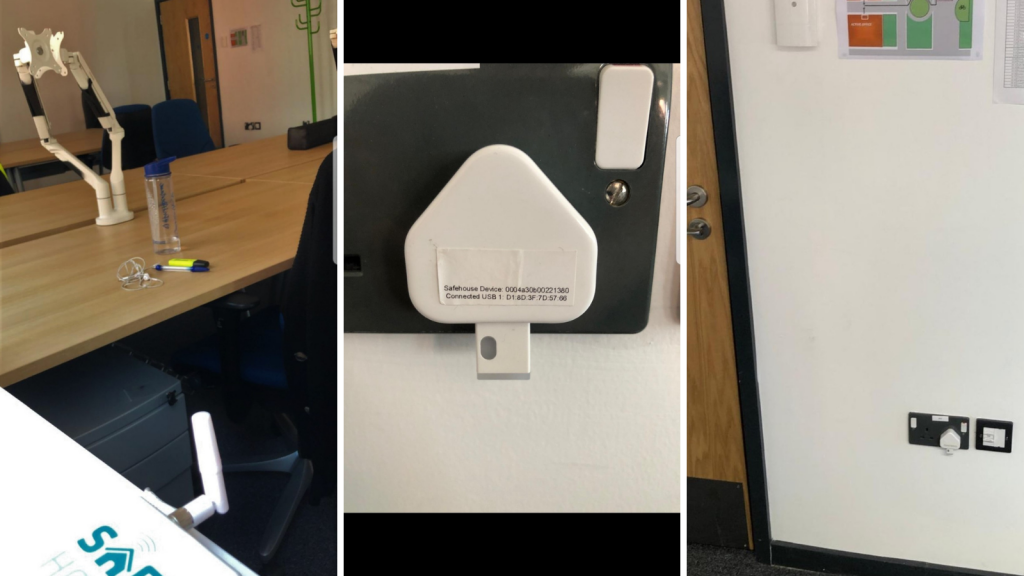We have recently completed a collaborative project with Safehouse Technology – whose smart sensors not only keep loved ones safe, but can also be used to monitor low-carbon tech used in Active Buildings. We caught up with Hasan Hayat (Technology Transfer Fellow – Electronics Engineering, SPECIFIC) and John Griffiths (CTO, Safehouse Technology) to find out more about the project…
How have SPECIFIC and Safehouse Technology been working together?
Accurate and efficient sensing and environmental monitoring technologies lie at the forefront of SPECIFIC’s primary goal to improve the process of generation, storage and release of energy, reduce carbon emissions, and ensure the comfort and safety of occupants in modern-day buildings. Safehouse Technology provides end-to-end solutions using LPWAN (low powered wide area network) technology to accurately monitor a huge range of internal environmental and wellbeing factors such as temperature, humidity, light, noise, CO2, VOCs, air pressure, air quality, and movement.
This collaborative R&D project titled ‘Sensing and Environmental Monitoring in Residential and Office Buildings’ has aimed to address the above by utilising LPWAN and Bluetooth Low Energy (BLE) based smart sensor devices and associated software provided to SPECIFIC by Safehouse Technology. Using these hardware and software components we have successfully monitored and evaluated seven essential environmental data parameters, i.e. temperature, humidity, air pressure, light, noise, VOCs and CO2, in three separate locations associated with SPECIFIC over a period of 6 months:
- A residential building in Swansea (Stage 1: April – May 2020)
- SPECIFIC’s Pilot Line Manufacturing Research Centre (PMRC) in Baglan (Stages 1 and 2: April – September 2020)
- SPECIFIC’s Active Office building at Swansea University’s Bay Campus (Stage 2: June – September 2020)
What have been the main outcomes of this partnership?
The partnership between Safehouse Technology and SPECIFIC has resulted in various new opportunities being realised, most notably a new focus on carbon neutral properties.
One of the major benefits for Safehouse Technology during this partnership has been the outcomes of a technical evaluation regarding the price and performance of Safehouse sensors, the results of which showed that not only are Safehouse sensors accurate to within 0.1% of competitors’ sensors, but also cost one third less.
Safehouse Technology’s end-to-end system is affordable, scalable, and requires no professional installation to achieve reliable data.
SafeHouse Technologies and SPECIFIC are exploring new solutions for reducing the carbon footprint of properties using granular data captured by LPWAN sensors and collating the collected data using smart meter systems. This will identify and isolate not only high impact properties but high impact rooms, this will allow interventions and improvements to be made at both a local and individual property level.
Did you have to overcome any obstacles during the project?
During project planning in March 2020 it was agreed to utilise SPECIFIC’s Active Office as the primary location for this sensing and environmental monitoring study.
However, after COVID-19 working restrictions were put in place, the original project plan was revised and extended to include two additional locations, a residential building in Swansea, and SPECIFIC’s PMRC building in Baglan that was being used for hand sanitiser production for the NHS. By adapting the plan, SPECIFIC was able to successfully evaluate Safehouse Technology’s hardware and software in both residential and commercial environments during the course of this project.
What are the next steps?
Safehouse Technology and SPECIFIC are working together on projects with the aim of delivering the carbon neutral properties of the future. For example, by partnering with housing associations, like for like properties could be monitored. Trends from granular data collected could be analysed with the result of making a set of positive interventions and improvements. This would reduce the carbon footprint and importantly improve the health and wellbeing of occupants.
Such studies could serve as a catalyst to demonstrate that the technology is now ready both in terms of affordability and availability to have a significant impact on the carbon footprint of households across the UK.

Figure 1.Safehouse Technology’s Hub and USB sensors installed in SPECIFIC’s Active Office building
Our collaboration with Safehouse Technology’s is just one example of how companies of all sizes work effectively with SPECIFIC.
Why not contact us to see how we can help you in developing new products, processes in low carbon technology?
